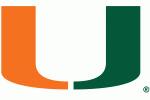A look at the recent history of two programs that have struggled for, and briefly found, modern college football relevance.

A Model for Success
It’s been a great few years for Duke football fans (who, I am told, do actually exist). In the past four seasons, the Blue Devils have gone 33-20 en route to four straight bowl games. On the other hand, they’ve lost three more bowl games than Wake has in that span. But really, they’ve had great success. And they’ve achieved that success as a small, elite, private school in North Carolina, without any recent history of sustained success on the gridiron, and with a fan base that tends to pay much more attention to hoops. It’s no wonder, then, that Duke comes up often in conversations about what realistic goals can look like for Wake Forest football.
What can easily get lost in Duke’s recent success is the fact that just a few years ago, Duke fans were looking at Wake’s program the same way we now look at Duke’s. In 2011, Duke was in the midst of a second straight 3-9 season (sound familiar?) and hadn’t had a winning season since 1994. In the 17 years between that winning season and the end of 2011, Duke went 37-158, averaging a mere 2.1 wins per season and suffering through four winless seasons. In 2011, Wake was going to its fourth bowl game in six seasons, and was only five years removed from winning an ACC championship and playing in the Orange Bowl.
Recent Trends
The chart below shows the win totals per season (including bowls) for Wake Forest and Duke football over the past ten years, and indicates which bowl games each team played in.
/cdn0.vox-cdn.com/uploads/chorus_asset/file/7055919/winsbowls.jpg)
The most glaring aspect of this chart is how these two programs have essentially switched places over the last decade. Of course, this is bracketed by the high water mark of Wake Forest football. But, while Wake played in three bowl games after the Orange Bowl, it only had two years in the next decade where the team did not perform worse year to year (one of those being last year’s repeat 3-9 performance). Whether you think Wake’s success in ‘06-’08 was an unsustainable fluke, or you blame complacency in the coaching staff and AD, it is clear that the ACC championship season did not translate into an elevated level of success for more than a couple of seasons.
Each team has had four seasons with at least 6 wins in the past decade. Wake’s were all in the first six years, while Duke’s have been the past four years. I suspect the typical college football fan may be surprised to hear that, between Wake and Duke, one program or the other has been in a bowl game 8 of the past 10 years.
Fortunes can change relatively quickly. It took Wake four years to go from winning the conference championship to being 3-9, and it took Duke one year to go from 3-9 to a bowl game and just one more year to end up 10-2 in the regular season.
Recruiting
A key part of achieving success at a school like Wake or Duke is winning recruiting battles against your peers. We don’t need to out-recruit Clemson and Florida State, but we need to recruit competitively against schools in the lower half of the conference so that we can have a chance to regularly go, say, 3-5 in the ACC and 3-1 in non-conference to end up at 6-6 and a bowl bid.
Here are the recruiting class rankings (according to 247sports) for Wake and Duke since 2006:
/cdn0.vox-cdn.com/uploads/chorus_asset/file/7056215/recruits.jpg)
Of course, recruiting class rankings are not the be-all and end-all of college football, and are likely least meaningful when comparing teams ranked closely together. But, they are useful to get a general sense of what kind of players a program is bringing in. In this case, you can see that Wake and Duke have generally recruited at very similar levels. The teams have been separated by 8 spots or fewer in the rankings for nine out of the eleven years listed.
However, you can also see that Duke has apparently been able to capitalize on its recent success much more than Wake was able to a few years earlier. It’s always difficult to time recruiting bumps, but in the three classes that came to campus after Wake’s ACC championship, Wake’s recruiting rank just improved from 70th to 62nd. This was despite Wake making two more bowl games. Two year later, Wake’s class was back to 70th.
Meanwhile, Duke went to its first bowl in 18 years in 2012. The class that came to campus after that bowl was ranked 70th, but Duke’s next classes were ranked 60th, 51st, and 33rd.
There are differences between Wake and Duke, but as far as college football programs go, there is likely a big overlap between players who would seriously consider playing at one program or the other. To start seriously competing for routine success, Wake needs to win more recruiting battles against teams like Duke.
Implications
This game is important to Wake fans for three reasons in particular:
First, it’s Duke. That speaks for itself.
Second, it’s a “peer” school in the college football landscape. This particular matchup is the kind that falls into the “difficult but doable” category, and Wake needs to start winning some of those games to reassert its relevance. A win against a peer that has been so successful in the past few years could help remind fans that Wake has had similar success in the recent past, and could accomplish it again soon. Finally, beating a peer school on the field can benefit us off the field by giving our staff additional ammo in recruiting battles.
Finally, in the short term, a win would put Wake at 2-0 and firmly on its path towards bowl eligibility. It would be awesome to know the team only needs to pick up four wins to go bowling and have games against Delaware, Syracuse, UVA, Army, and BC at home left on the schedule.
Duke is favored to win on Saturday (and I’m frankly surprised at how tight the spread is). That said, this is a game that Wake can win, and a win would be huge for this program, the players, and the fan base. Let’s hope the team stays undefeated. Go Deacs!



















